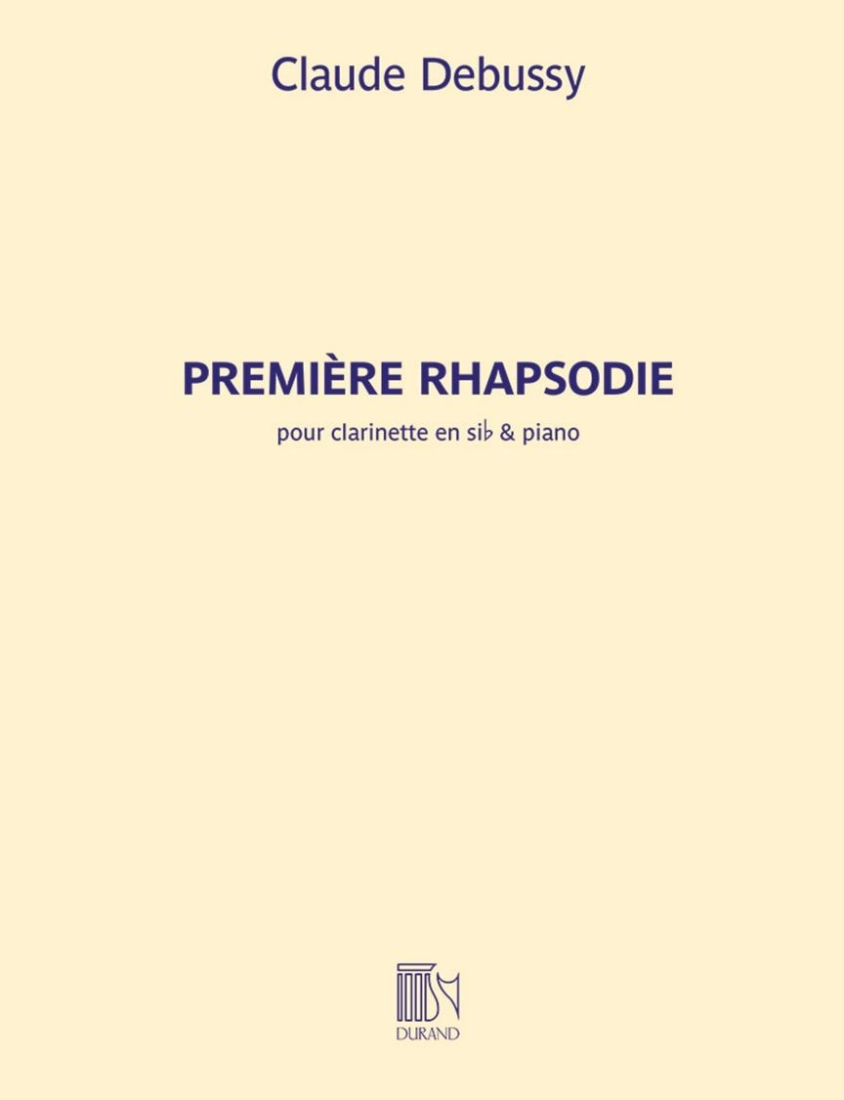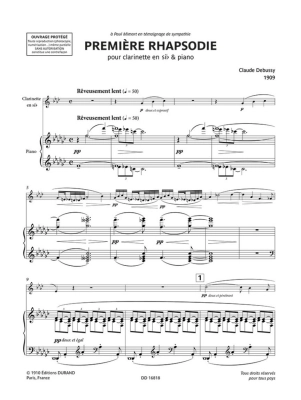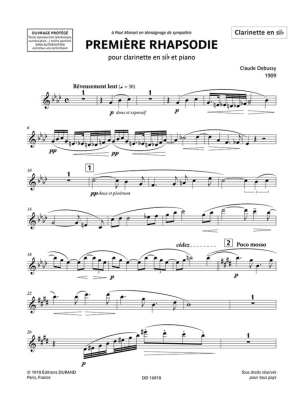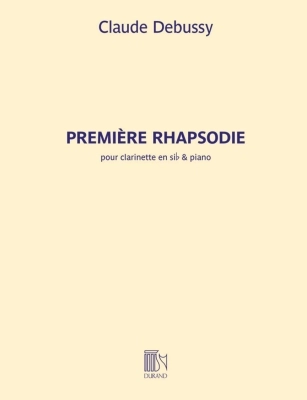Opens in a new window
Editions Durand Premiere Rhapsodie - Debussy - Clarinet/Piano - Book

Additional Photos:


- Composer/Author: DEBUSSY, CLAUDE
- Instrumentation: CLARINET
- Model # 50566025
Format: Book
Instrumentation: Clarinet and Piano
This edition is enriched with a historical introduction in French and English by notable clarinettist Pierre Genisson.
"[...] this piece is, without a doubt, one of the sweetest I have ever written." As this letter that Claude Debussy wrote to Durand, his publisher, indicates, the composer held his Rhapsodie for clarinet and piano in very high regard. In 1909, when Gabriel Faure, then director of the Paris Conservatoire, commissioned the piece, Debussy had never before written for clarinet. He dedicated it to P. Mimart, "as a token of my regard". After the unanimous recognition of the high quality of this solo, written for competition, Mimart premiered it in public on 16 January 1911 at the Salle Gaveau in Paris. Two years later, Debussy would choose to expand it further, writing a version accompanied by orchestra with a greatly expanded palette of colours. As its name suggests, it is freeform, and emanates a great poetry. The introduction, "Reveusement lent", is an evocation of the dawn. This gives way to a scene of nature's awakening, which never ceases to amaze us with its transformations. At times calm and lyrical, it sometimes becomes mischievous, vindictive or even joyous, especially during the scherzando passages. In a heightened impressionist style, Debussy gives free rein to his imagination, demanding tremendous speed and precision from the clarinettist.
Q & A
There are currently no questions for this product.
Reviews
There are currently no reviews for this product. Be the first to write one!





